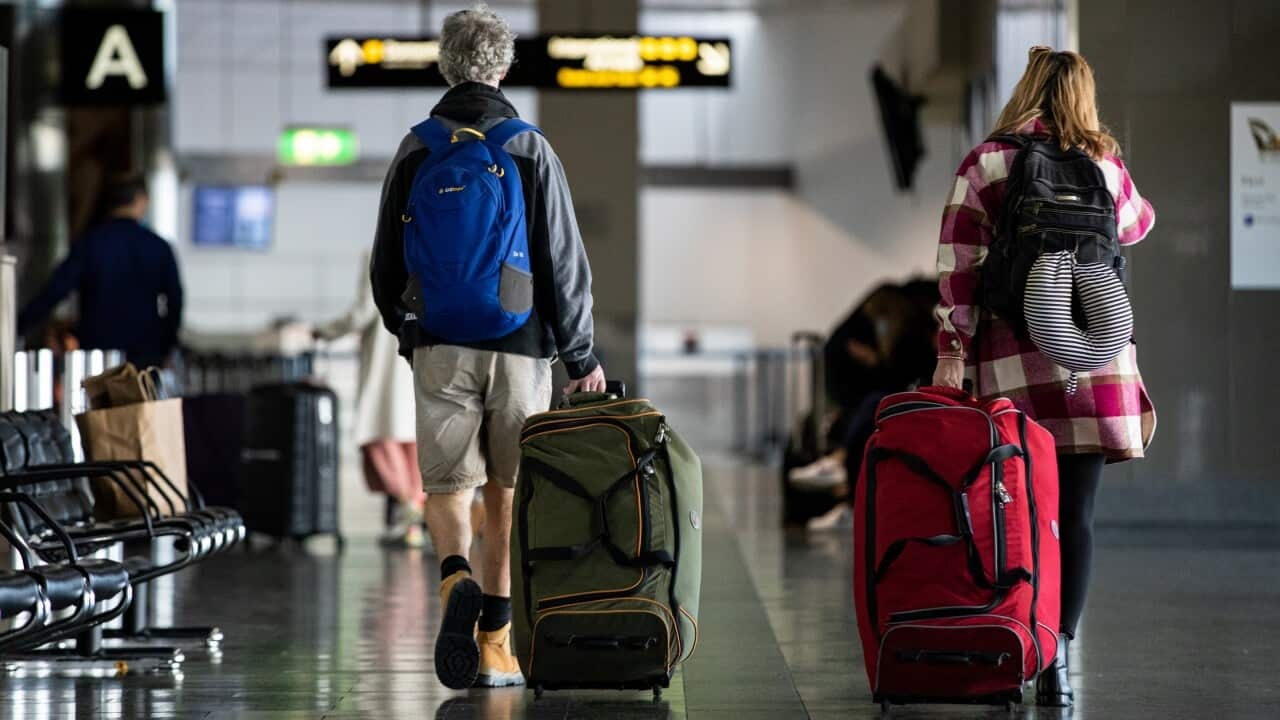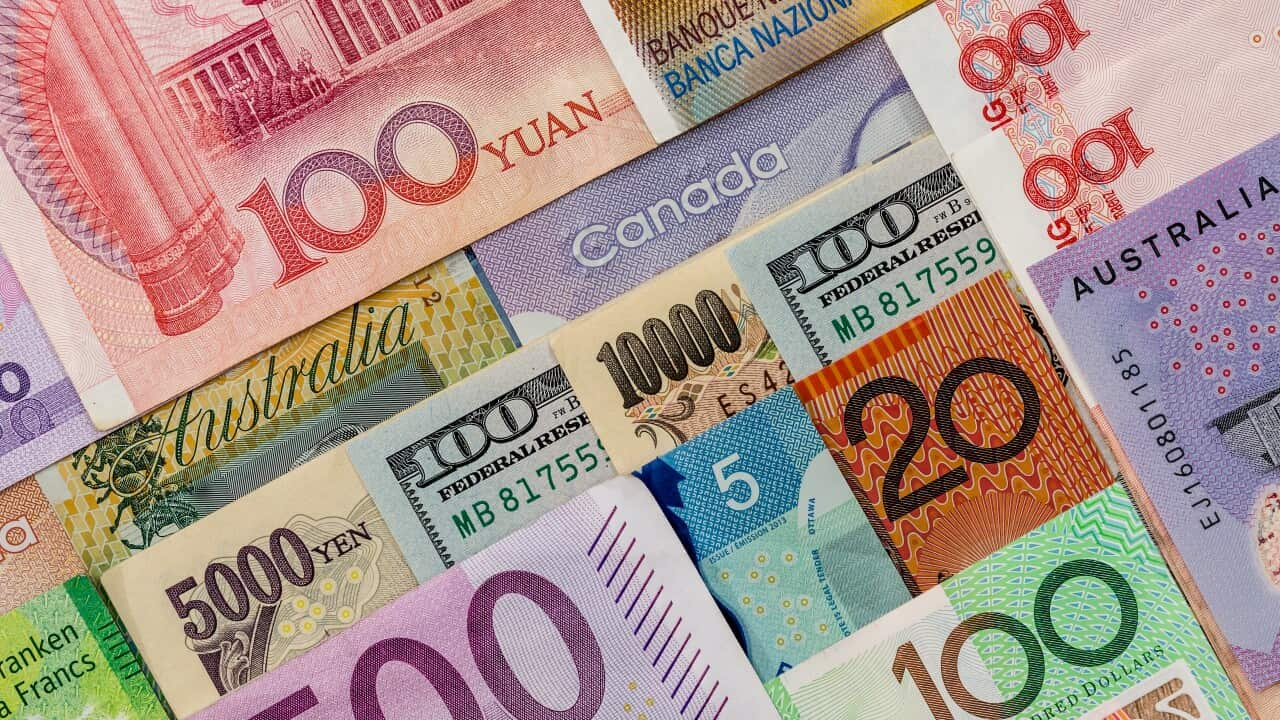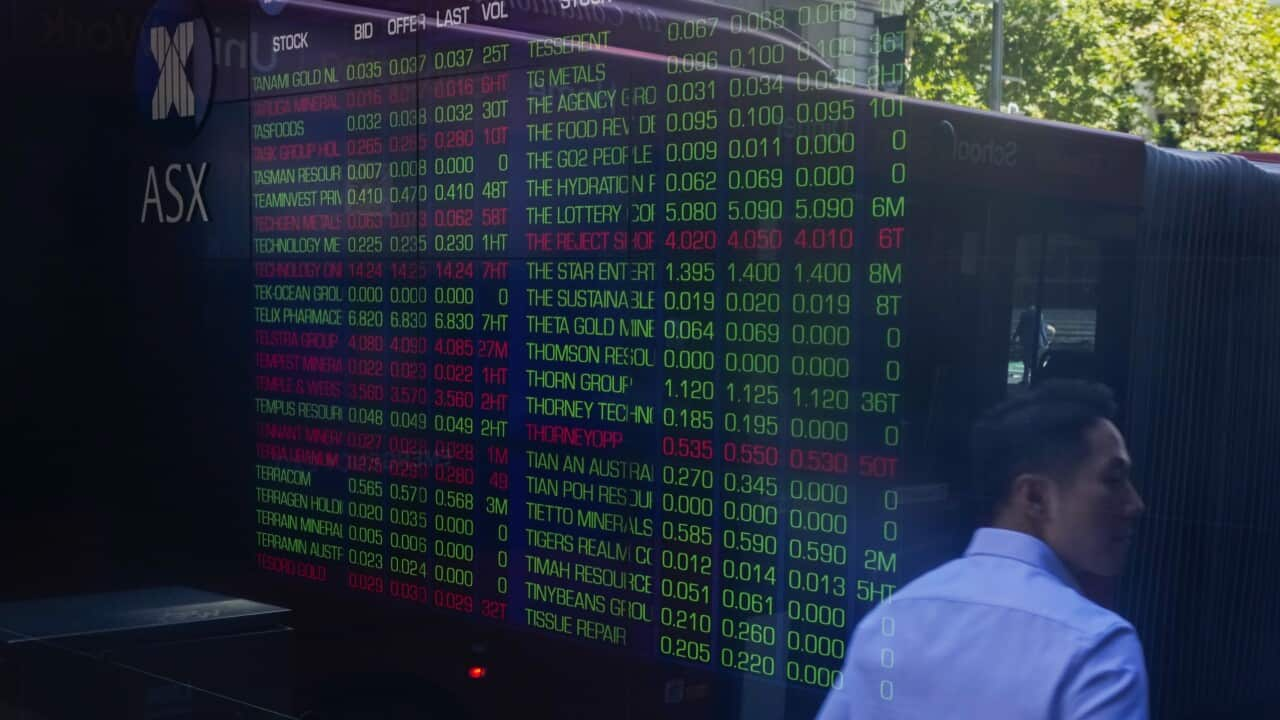Key Points
- The Australian dollar rallied to a four-month high last week.
- It's performing well against several Asian currencies.
- But it's down against the euro and the pound.
Thinking of an overseas trip? You might prefer to choose Asia over Europe in the coming weeks if you're basing your travel on the strength of the Australian dollar alone.
The currency rallied to a four-month high last week, thanks to speculation interest rates will continue to rise and also news China will be taking steps to stimulate its economy.
“The Australian dollar is quite sensitive to what happens in China because Australia is seen as a bit of a proxy for the Chinese economy, so with strength in China, people usually think that is good for Australia because it means an increase in demand for our commodity exports,” Diana Mousina, a senior economist at AMP, said.
But the Australian dollar has been fluctuating and is not particularly strong against the United States dollar, which market analysts always compare it to.
It's been hovering between 65-70 cents to the US dollar over the past eight months, which is not a historically strong level, Ms Mousina said.
She said the Aussie dollar might be sensitive to global downward pressures in the next 12 months but may also be boosted by commodity prices and further interest rate hikes.
Here’s how the AUD is performing compared to local currencies around the world:
The good
Japan
The Australian dollar is up 7.1 per cent against the Japanese yen since October 2022. One Australian dollar will buy you 97 yen.

The Australian dollar has been strong against the Japanese yen. Source: AAP / Kimimasa Mayama/EPA
“You’re getting just about as much of an advantage as you ever will - it hasn’t been up this high consistently for about 20 years," he said.
Ms Mousina said the yen has been much weaker because the country’s central bank is still keeping interest rates at a very low level.
Japan officially opened to tourists in October last year following strict shutdowns during the coronavirus pandemic and is a popular travel and skiing destination for Australians.
China
China is another place where the Australian dollar is soaring, having risen almost 10 per cent on a relatively weak Chinese renminbi (CNY) since October last year.
“(Compared to the CNY) The Aussie dollar has gone absolutely nuts in the last six weeks," Mr Sycamore said.
"And if you look at October, the AUD was trading around 445ish CNY, and it's now trading at 489, which means that the Aussie now is buying about 10 per cent more Chinese yuan or renminbi as it’s called."
He added that China’s central bank cut its lending rate last week as the start of expected stimulus measures, which will likely lead to stronger support for the Aussie dollar.
Indonesia
Good news for the Australians who already have planned a trip to Bali (or other Indonesian islands) - the Australian dollar is up 7.82 per cent against the Indonesian rupiah since October last year. One dollar will buy you 10,290 rupiahs.
It has rallied hard in the last six months and bounced back relatively quickly after lows last year when the chances of a recession were first discussed.
Australians travelling to Bali upon arrival, following a string of disrespectful incidents involving foreigners.

Canggu beach, just north of Kuta and Seminyak in Bali, Indonesia Source: AAP, Press Association / Sergi Reboredo/Alamy
India
The Australian dollar has shot up 10.1 per cent compared to October last year against the Indian rupee. One dollar will get you 56 rupees.
It’s down slightly from highs in February this year, but it is at one of its strongest levels in the last three years.
Norway and Sweden
While the Australian dollar is trading poorly against the Euro (see below), European countries with their own currencies are a different story.
The dollar has been very strong in Norway and Sweden and reached a 10-year high earlier this year against the Norwegian krone and Swedish krona.
Your dollar will buy you 7.2 Norwegian krone and 7.3 Swedish krona at the time of writing.

Stockholm, Sweden. The Australian dollar is buying about 7.3 Swedish krona. Source: AAP / James Lane
Where it's complicated
United States
On some short-term metrics, the Australian dollar is tracking strongly against the US dollar, having risen 11.1 per cent since October last year.
Mr Sycamore said that based on this, more Australians might consider a trip to the US or countries that use its currency, such as Costa Rica, Puerto Rico, Ecuador, or other Latin American countries where it is widely accepted.
But it’s down on highs seen in 2021 and its standard range pre-pandemic. Right now, the Australian dollar is worth 68 US cents.
And looking forward, Commonwealth Bank institutional forecasts expect the dollar to fall to 62 US cents in the September quarter and remain in the mid-60s until March 2024.

The Australian dollar has been bouncing between 62 and 71 cents to the US dollar. Source: SBS News
Turkey, Lebanon and Argentina
These countries are experiencing currency collapse, meaning the Australian dollar would, in theory, be incredibly strong there.
But they are all experiencing astronomical inflation, around 40 per cent in Turkey, 269 per cent in Lebanon, and 114 per cent in Argentina.
This means the price of goods is highly unpredictable and likely very high.
New Zealand
The most popular destination for Australian tourists is its neighbour New Zealand.
The Aussie dollar is slightly down on the New Zealand dollar compared with October last year but has rallied sharply in the past three weeks amid bad economic forecasts in NZ. One dollar is worth NZD$1.10 at the moment.
The country has entered a technical recession, which is likely to depress its currency further.

Tauranga viewed from Mount Maunganui, New Zealand. One dollar is worth about NZD$1.10 at the moment. Source: AAP, SIPA USA / Gado Images
The Bad
Europe
Against the euro, the currency of 20 countries in the Eurozone, the Australian dollar has gone down 1.75 per cent.
"If you think back to last year, there were factors like the war in Ukraine, an energy and commodity crisis, and Russia's economic problems, and that really weighed on the European currency," Mr Sycamore said.
"But the European economy has been extremely resilient as well, more so than expected."
One dollar is worth .62 euros.

The Australian dollar is down against the euro. Source: SBS News
United Kingdom
Another common destination for Aussie passport holders is the UK, but the dollar is not performing well against the pound, having dipped 2.64 per cent.
One Australian dollar is now sitting at 54 pence, a figure that's been tracking downwards all year.
Mexico
For Australians seeking sunny summer destinations, Mexico may not be the place to go, as the Australian dollar has sunk 5 per cent against the Mexican peso since October last year. Your dollar will buy you 11.7 pesos at the moment.











